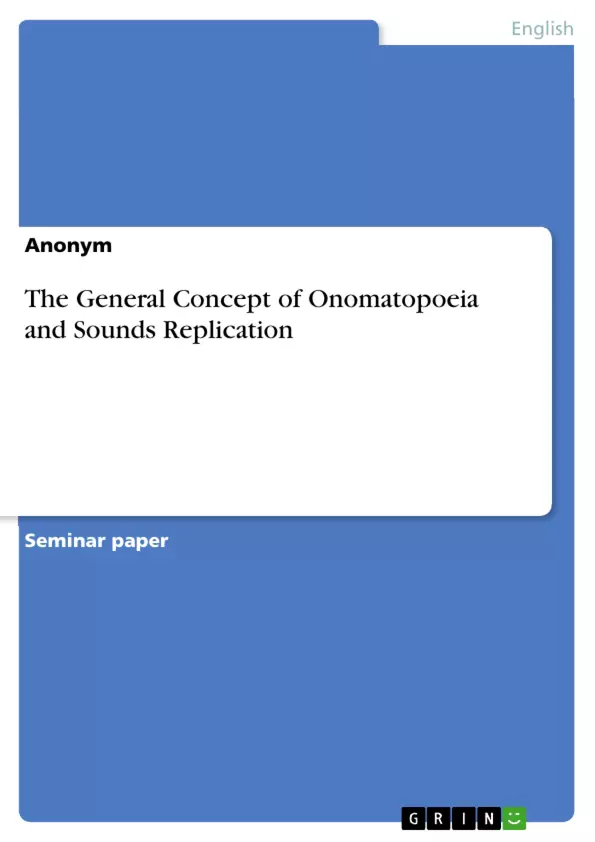In this paper, there will be a thematic overview of some of the most interesting contributions to the area of onomatopoeia and other sound symbolism. Most linguists have had something to say on the subject, in many cases using different terminologies.
The themes that are especially important are the questions of integration into language (grammar and lexicon), of productivity, of universality and of explanation. The chapter will end with a summary of forms and meanings of onomatopoeic and sound symbolic expressions.
Inhaltsverzeichnis (Table of Contents)
- Background
- 1.1. ONOMATOPOEIA AND SOUND SYMBOLISM IN THE SCIENCE OF LANGUAGE
- Terminology
- Onomatopoeia
- Sound symbolism
- Phonestheme
- Ideophone
- Morpheme
- Conclusion
- 1.2. THE LINGUISTIC NATURE OF ONOMATOPOEIC WORDS
- 1.3. THE MORPHOLOGY OF ONOMATOPOEIA
- Some generalizations
- Conclusions
- Categories
- Variation in words
- Onomatopoetic names
- Bibliography
Zielsetzung und Themenschwerpunkte (Objectives and Key Themes)
This paper aims to provide a comprehensive overview of the concept of onomatopoeia and sound symbolism in the science of language. It explores the terminology, linguistic nature, morphology, and integration of these phenomena into language, drawing upon contributions from various linguists.
- The integration of onomatopoeia and sound symbolism into language (grammar and lexicon)
- The productivity of onomatopoeia and sound symbolism
- The universality of onomatopoeia and sound symbolism
- Explanations for onomatopoeia and sound symbolism
- The forms and meanings of onomatopoeic and sound symbolic expressions
Zusammenfassung der Kapitel (Chapter Summaries)
The paper begins by exploring the diverse terminology used in the field of onomatopoeia and sound symbolism, highlighting the challenges of defining and differentiating these concepts. It then delves into the linguistic nature of onomatopoeic words, examining the role of sound symbolism in language, its productivity, and its universality. The chapter concludes with a summary of the forms and meanings of onomatopoeic and sound symbolic expressions.
The second chapter focuses on the morphology of onomatopoeia. It investigates the generalizations, categories, variations in words, and the use of onomatopoeia in names. This chapter provides a detailed analysis of the structural features of onomatopoeic words.
Schlüsselwörter (Keywords)
The paper focuses on the concepts of onomatopoeia, sound symbolism, phonesthemes, ideophones, morphology, language, lexicon, grammar, productivity, universality, and meaning.
- Quote paper
- Anonym (Author), 2016, The General Concept of Onomatopoeia and Sounds Replication, Munich, GRIN Verlag, https://www.grin.com/document/470689



